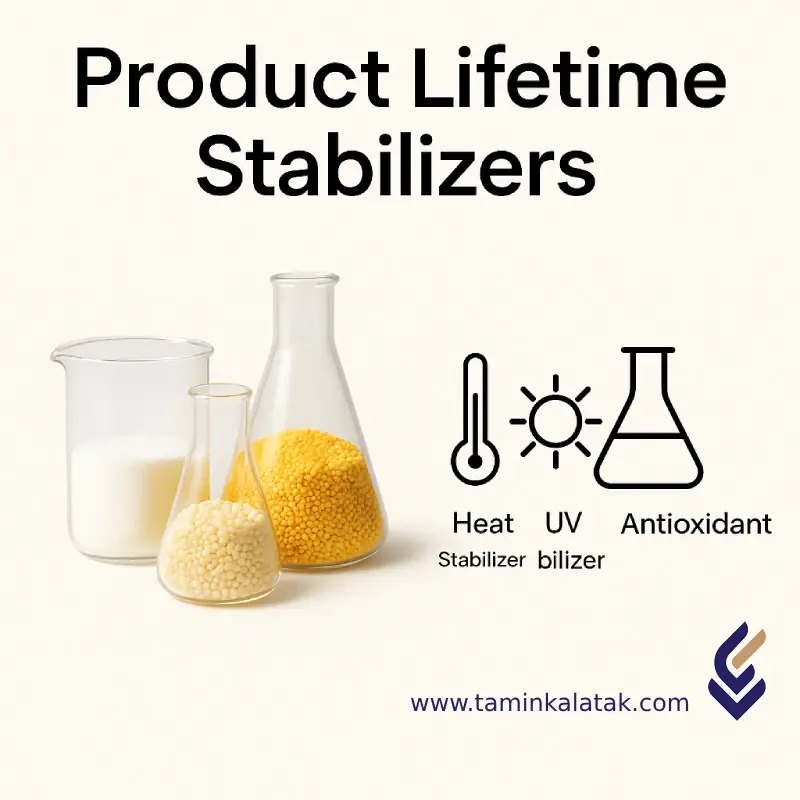Polymers are made up of very large molecules made up of many repeating units called monomers, which ultimately form this long polymer chain
Ageing Stabilizers
Aging Stabilizers are chemical compounds added to various materials, including polymers, rubbers, and paints, to extend their useful life and prevent degradation caused by environmental factors such as sunlight, heat, oxygen, and moisture. These materials work by various mechanisms and protect materials from aging by slowing down the rate of oxidation and decomposition reactions.
Why do we need aging stabilizers?
Increase the lifespan of materials: Without the use of stabilizers, materials degrade over time and lose their properties.
Improve performance: Stabilizers can help improve the mechanical, thermal, and chemical properties of materials.
Reduce costs: By increasing the lifespan of materials, maintenance costs are reduced.
Mechanism of action of aging stabilizers
Free radical absorption: Many stabilizers interrupt the chain of oxidation reactions by absorbing free radicals.
Energy absorption: Some stabilizers, such as UV absorbers, absorb radiant energy and dissipate it as heat.
Complex formation: Some stabilizers form complexes with metal ions and prevent the catalysis of oxidation reactions.
Applications of aging stabilizers
Aging stabilizers are used in various industries, including plastics, rubber, paints, coatings, and food. Some of the important
applications of Aging Stabilizers
Plastics industry: Extending the shelf life of plastic products such as pipes, films, and automotive parts
Rubber industry: Increasing the resistance of rubber to aging and cracking
Paint and coating industry: Improving the durability and stability of paints and coatings
Food industry: Extending the shelf life of packaged foods
Pharmaceutical industry: Protecting drugs from degradation
Applications
| Applications | , , , , , |
|---|
Ageing Stabilizers
| Product | Grid | MFI (g/10 min) | Density (g/cm³) | Process method | Application / Description |
|---|---|---|---|---|---|
| UV Masterbatch | UV-101 | 15,00 | 95,00 | Extrusion, injection molding | Protects plastics from UV light, suitable for agricultural and packaging films |
| Heat Stabilizer | HS-202 | 2,00 | 96,00 | Extrusion, injection molding | Increased thermal resistance in PVC, suitable for pipes and profiles |
| Antioxidant Masterbatch | AO-303 | 18,00 | 94,00 | Injection molding | Prevents oxidation of polymers, suitable for automotive parts and home appliances |







